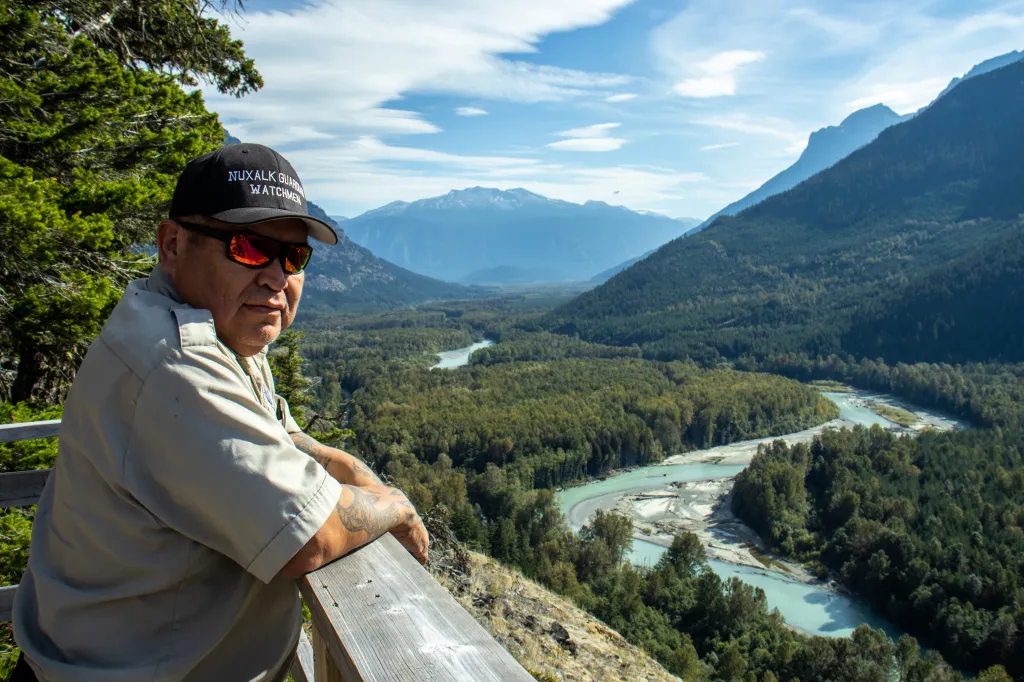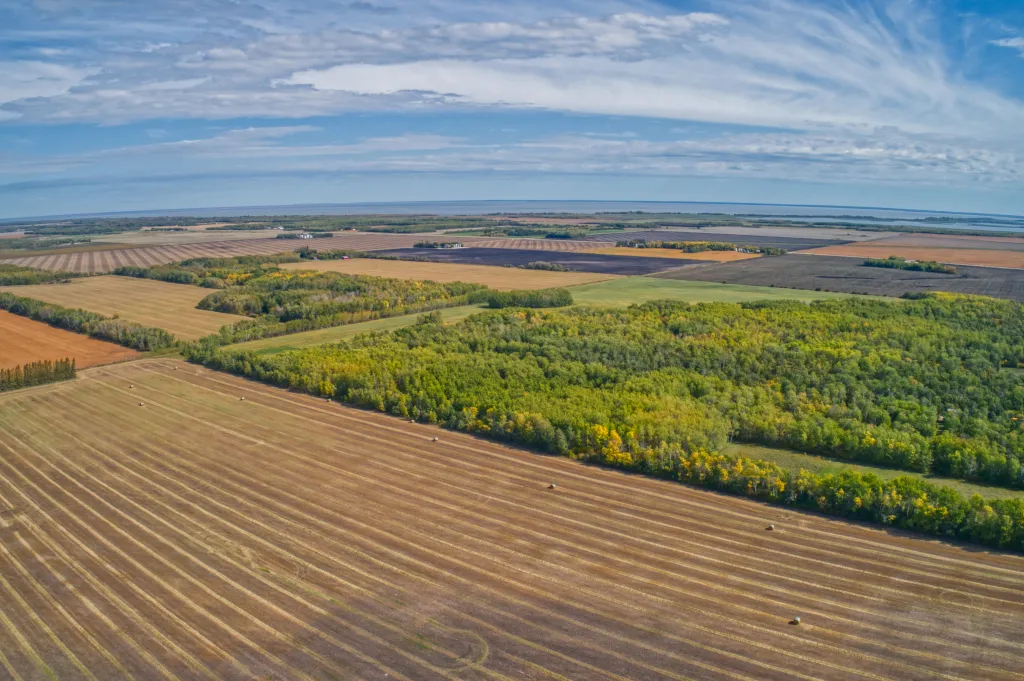The Great Bear Rainforest on British Columbia’s North and Central Coast sequesters millions of tonnes of carbon dioxide across 6.4 million hectares of snow-capped mountains, ancient western red cedars, and Sitka spruce. It is considered one of the world’s largest carbon sinks—meaning it absorbs more carbon dioxide (CO2) than it releases.
For millennia, coastal First Nations have been stewards of the rainforest, protecting its diverse ecosystems and safeguarding their traditional and unceded territories for future generations to come. That relationship has taken on a new dimension with the formation of the Great Bear Carbon Credit Limited Partnership.
Under the Great Bear Carbon banner, a collection of coastal First Nations has entered the voluntary carbon offset market. The organization generates carbon offsets by preserving trees and ecosystems that naturally store CO2, with each carbon offset verifying the removal of one tonne of carbon from the atmosphere. Businesses, governments and individuals can purchase carbon offsets to compensate for their environmental impact. The Great Bear Carbon program helps raise revenue to support the local First Nations and their stewardship efforts.
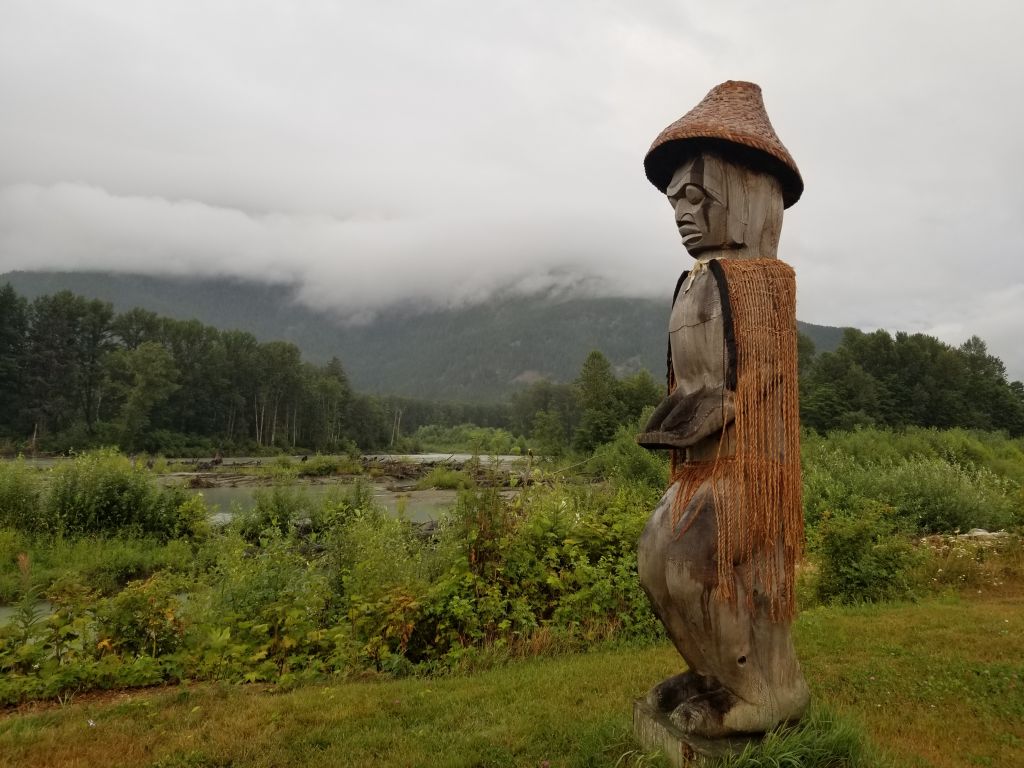
Welcome figure in Nuxalk Territory. Photo credit: Coastal First Nations
Dani Warren, Senior Manager of Sales and Operations for Great Bear Carbon, says it’s one of the largest carbon offset project of its kind in Canada.
“We’re 100 per cent Indigenous-owned,” she says. “Our board of directors is made up of chiefs from across the region, and we work directly with the communities.”
The project is an innovative example of how Indigenous leadership can bring nature-based solutions to the voluntary carbon market.
A carbon offset project rooted in tradition and innovative in its approach
Great Bear Carbon was set in motion during the late 1990s, as part of an Indigenous-led effort to ensure more sustainable practices in regional conventional land use planning and forest management. After years of dialogue and government-to-government negotiations between the province of British Columbia, Coastal First Nations and Nanwakolas Council, a collaborative approach was conceived as part of a Reconciliation Agreement. Grounded in Ecosystem-Based Management (EBM) principles, this new approach was designed to protect and conserve ecosystem integrity, while maintaining and enhancing the social and cultural wellbeing of coastal communities.
In 2007, the Great Bear Rainforest became the world’s first Project Finance for Permanence (PFP)—a new approach for supporting large-scale conservation initiatives that has been adopted to protect globally important ecosystems in the Amazon, Costa Rica, Colombia, and Peru. The project secured $120 million in funding, with contributions from both governments and private funders.
Development of the Great Bear Carbon projects began in 2006 as a means to generate revenue through reforestation and conservation, instead of extractive processes like logging. The carbon project initiatives were later included in the 2009 Reconciliation Agreement.
“The communities had amazing goals and things they wanted to achieve together,” says Warren. “Carbon offsets would provide one source of long-term funding to support those initiatives.”
Between 2009 and 2011, Great Bear Carbon launched two forest carbon projects: The North and Central-Mid Coast project and the Haida Gwaii project. A third project, the South Central Coast is managed by the Nanwakolas Council, an alliance of First Nations which stewards the southern part of the temperate rainforest.
“The original buyers of those offsets were the B.C. provincial government,” explains Zoe Heath, Manager of Sales and Operations at Great Bear Carbon. As part of its carbon neutrality goals, the provincial government purchases carbon offsets.
Today, Heath says B.C.’s government offset purchases account for about 20% of Great Bear Carbon’s business. “The remaining 80% is coming from a very diverse portfolio of buyers,” she says. “We sell to individual buyers with the motivation to offset their carbon emissions right up to large institutions like RBC. It’s very diversified.”
Since the projects started in 2009, they’ve generated over $80 million in revenue for the First Nations partners, including: Gitga’at, Heiltsuk, Kitasoo, Metlakatla, Nuxalk, Wuikinuxv, and Council of the Haida Nation.
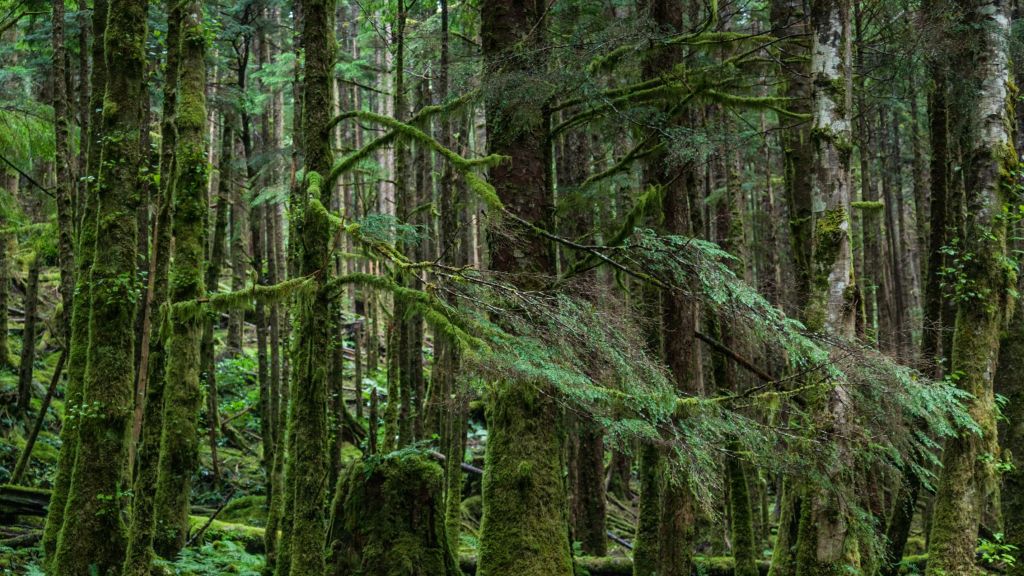
Great Bear Rainforest on British Columbia’s North and Central Coast. Photo credit: Coastal First Nation
An opportunity for economic development
The volunteer carbon markets are increasingly being viewed as a tool of economic development for Indigenous and other local communities, which are at the frontline in managing an estimated 40% of the planet’s ecologically intact landscapes.
Brian Hong, director of the Environmental Markets Solutions Group, within RBC Capital Markets, says Great Bear Carbon illustrates how emission reduction can work in tandem with social impact.
“The revenues from the Great Bear Carbon project are helping Indigenous communities build schools and community centres,” says Hong. “This is having a material positive impact, not just on the Great Bear Rainforest, but also on the community.”
The project draws investors who are concerned about their own environmental impact and interested in supporting Indigenous governance in Canada. To ensure it meets the highest standards of the voluntary compliance market, the project is diligently verified to preserve its high integrity.
“The projects are validated at the start, but then there’s a verification every time we want to get a new year of offsets issued,” says Heath. “It goes through a very rigorous process, including third-party auditors…Overlaying that with the co-benefits makes Great Bear Carbon offsets an appealing option for people who are looking to offset their emissions.”
Investment in Indigenous stewardship and conservation
The Atmospheric Benefit Agreements include a stipulation that 65% of the funds raised through carbon offsets go toward stewardship. “The remaining amount is up to the First Nations to decide where to spend those revenues for their communities,” says Heath.
Over the past 15 years, the communities have found diverse uses for the funds generated. One of the flagship achievements of the funding is its support for Coastal Guardians—the frontline stewards who work for their Nations and as a regional collective to monitor and protect their lands and waters. These Guardians play a critical role in all aspects of stewardship for Coastal First Nations—ensuring resources are sustainably managed, that rules and regulations are followed and that land and marine use agreements are implemented effectively. Comprising a mix of permanent and seasonal staff roles, these local Indigenous stewards are partially funded by the carbon offsets.
“Coastal Guardians are the eyes and ears of their territories, and they uphold and enforce their traditional and contemporary Indigenous laws,” says Warren.
In 2022, the Nuxalk and Kitasoo Xaixais First Nations partnered with BC Parks to add Park Ranger authorities to their Guardians’ enforcement tools, the first collaboration of its kind in Canada.
The benefits of Coastal Guardians go beyond the protection of local ecosystems across the Great Bear region. Supporting these roles could also be viewed as a form of reconciliation, since it advances economic opportunities close to home and helps to get local Indigenous people back into their traditional territories, learning traditions and re-connecting with their natural and cultural heritage.”
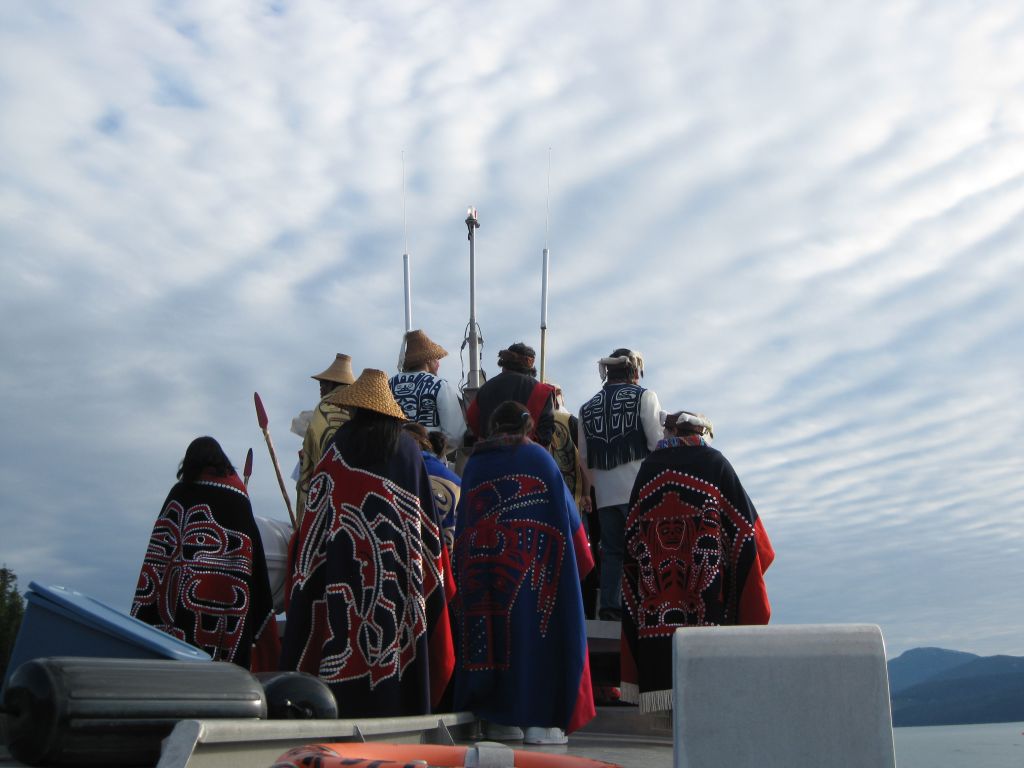
Photo credit: Coastal First Nations
Are forest carbon projects at risk of forest fire?
Nature-based solutions cannot guarantee permanent carbon sequestration, with factors such as wildfire, insect outbreaks and disease, and annual harvest rates having an impact on the effectiveness of a forest’s ability to store carbon. This is one of the reasons why stewardship and conservation projects like Great Bear Carbon are a critical tool in efforts to protect the longevity and health of Canada’s vital forest land.
Wildfires, in particular, are a destructive threat to the wellbeing of forests, and pose a risk to the impact of nature-based carbon offsets like Great Bear Carbon. But Warren says the temperate rainforest’s dampness and proximity to the coast put the risk of fire low: “On Haida Gwaii, the risk is 4% and the North and Central Coast, it’s a 9.5% risk,” she says. “We have never had a reversal due to a fire or damage to the forest.”
In the rare event of a forest fire, the investor would get replacement offsets. Heath says the stewardship programs include proactive strategies for managing wildfire risk, including monitoring and assessment. “They’re using modern technology, science and Indigenous knowledge to assess the risk of fire and prioritize any mitigation efforts that there might be,” she says.
A model for Indigenous leadership in the carbon offset market
Heath says Great Bear Carbon is a model for carbon offset projects that foster Indigenous ownership and draw from traditional knowledge.
“These projects are really a model for ethical nature markets as well and centring Indigenous rights, while also protecting old growth and delivering climate and social outcomes for people and the planet,” she says.
Warren agrees, saying she hopes Great Bear Carbon will inspire similar projects.
“We are very niche in Canada,” she says. It’s something, as an Indigenous person, that she hopes will catalyze similar projects. “Carbon offset projects are a real opportunity to uplift Indigenous communities to boost the economic development of their communities and Canada, but also meet some of Canada’s conservation protection goals.”
Read more: Carbon credits: How your business can get started
To help navigate the rapidly evolving carbon markets, RBC Capital Markets offers extensive expertise and full capabilities in emissions trading across both compliance and voluntary carbon markets. The Environmental Markets Solutions Group collaborates with RBC Capital Markets’ Environmental Commodities desk, established in 2008, to offer bespoke solutions to clients looking to operationalize their net-zero targets through carbon and renewable energy solutions.



